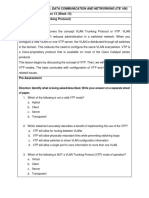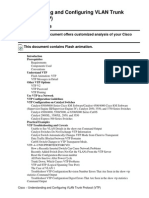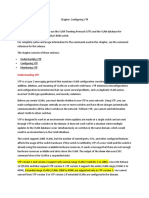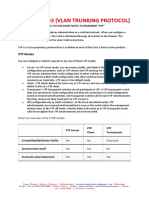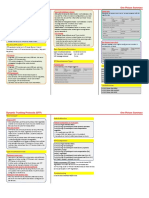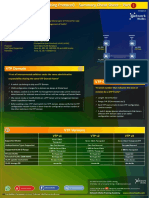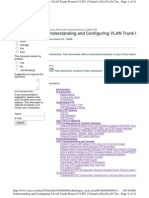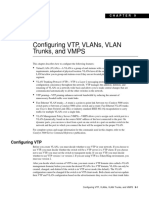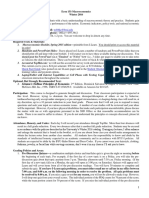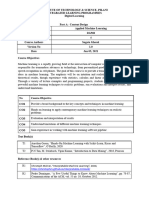0% found this document useful (0 votes)
113 views47 pagesLAN Switching & Wireless Networks
VTP (VLAN Trunking Protocol) allows network administrators to manage VLAN configurations across multiple switches in a network. It maintains VLAN configuration consistency by propagating VLAN additions, deletions, and renames between switches. Switches can operate as VTP servers, clients, or in transparent mode. VTP servers and clients share VLAN information using VTP advertisements to ensure all switches have the same VLAN configuration.
Uploaded by
Abdullah AmmarCopyright
© © All Rights Reserved
We take content rights seriously. If you suspect this is your content, claim it here.
Available Formats
Download as PDF, TXT or read online on Scribd
0% found this document useful (0 votes)
113 views47 pagesLAN Switching & Wireless Networks
VTP (VLAN Trunking Protocol) allows network administrators to manage VLAN configurations across multiple switches in a network. It maintains VLAN configuration consistency by propagating VLAN additions, deletions, and renames between switches. Switches can operate as VTP servers, clients, or in transparent mode. VTP servers and clients share VLAN information using VTP advertisements to ensure all switches have the same VLAN configuration.
Uploaded by
Abdullah AmmarCopyright
© © All Rights Reserved
We take content rights seriously. If you suspect this is your content, claim it here.
Available Formats
Download as PDF, TXT or read online on Scribd
/ 47










